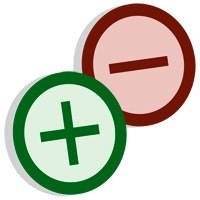“Plus-minus,” (an indicator of utility), reflects the difference of the abandoned and missed by the team of the pucks, while this or that player was on ice. This indicator does not apply to goalkeepers. When a team that plays in a minority or in equal parts with a rival draws a puck (free-throw goals are not counted), the players of this team at that moment on the ice receive a “plus”.
. The first team that began to calculate the “plus-minus” indicator was Montreal Canadiens around the 1950s. Other NHL teams adopted the initiative in the early 60’s, and the NHL itself began to officially calculate the “plus-minus” in 1968. Usually the invention of “plus-minus” is associated with the name of the famous player and trainer Emil Francis, but he only popularized and slightly adapted the system invented in Montreal.
The main problem of the indicator in Russia is that it does not work. In the NHL player in one period can outplay with all partners and all rivals. In the NHL do not adhere to the chain principle. All the way around in Russia. Here the link at the beginning of the season can enter the field and in the end in the same composition to leave the field. In this situation, all players in the link will have the same score.
The indicator depends on the factor of the partners / rivals – put the player in the 4th link of the “weakest” club khl and in the 1 link of the strongest club – get 2 different indicators. Therefore, the indicator is largely dependent on the coach. He will put the player in 1 link – there will be one results, and if in the 4th – then already the others. The indicator depends on the coach, and not only on the player himself.
Polozov A.A. Ranking in hockey: are the trainer’s estimates accurate? / A.A. Polozov, E.G. Shurmanov // Theory and practice of physics. Culture: 2012. – N 5. – P. 45-49.
Handbook of Ratings. Approaches to Ratings in the Economy, Sports, and Society / A. Karminsky. A. Polozov / International Publishing house “Springer”, 2016., 360c.
The utility indicator “Plus-minus” in hockey – is there any point in using it?


Popular
New
Interesting news - the football club asks its fans to design a new uniform. The announcement was posted on the website o...
MoreA little about the personality in football - about the president of the Italian football club Cagliari who speaks a litt...
MoreАA Polozov Computer model of the Russian team matches at the FIFA world cup Russia 2018 "International Journal of Physic...
MoreAmerican Journal of Sports Science Volume 7, Issue 1, March 2019, Pages: 11-19 Received: Feb. 19, 2019; Accepted: Mar. 2...
More









